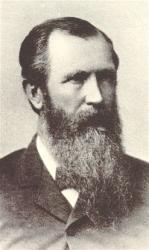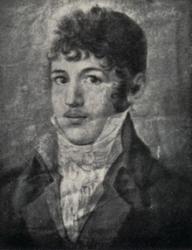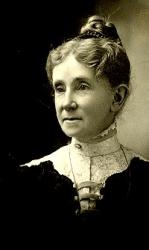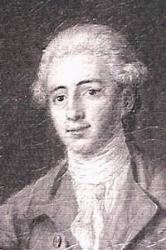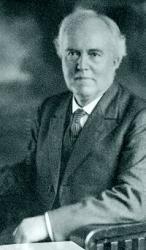
1648 - 1717 Person Name: Madams Guyon Hymnal Number: 408 Author of "All scenes alike engaging prove" in Songs of Victory Guyon, Madame. (1648-1717.) Jeanne Marie Bouyieres de la Mothe was the leader of the Quietist movement in France. The foundation of her Quietism was laid in her study of St. Francis de Sales, Madame de Chantal, and Thomas ä Kempis, in the conventual establishments of her native place, Montargis (Dep. Loiret), where she was educated as a child. There also she first learned the sentiment of espousal with Christ, to which later years gave a very marked development. She was married at sixteen to M. Guyon, a wealthy man of weak health, twenty-two years her senior, and her life, until his death, in 1676, was, partly from disparity of years, partly from the tyranny of her mother-in-law, partly from her own quick temper, an unhappy one. Her public career as an evangelist of Quietism began soon after her widowhood. Her first labours were spent in the diocese of Geneva, at Annecy, Gex, and Thonon, and in Grenoble. In 1686 she came to Paris, where she was at first imprisoned for her opinions in the Convent of St. Marie in the Faubourg St. Antoine, but released after eight months at the instance of Madame de Maintenon. She then rose to the zenith of her fame. Her life at all times greatly fascinated those around her; and the court, Madame de Maintenon, Fénelon (who ardently sympathised with her doctrine of pure and disinterested love of God), and Madame de Maintenon's College of Ladies at Cyr, came under the spell of her enthusiasm. But the affinity of her doctrines with those of Molinos, who was condemned in 1685, soon told against her. Her opinions were condemned by a commission, of which Bossuet was president. She then incurred Bossuet's displeasure by breaking the promises she had made to him to maintain a quiet attitude, and not return to Paris. She was imprisoned at Vincennes, Dec. 1695, and in the following year removed to Vaugirard, under a promise to avoid all receptions and correspondence, except by special permission. In 1698 she was immured in the Bastille, and not released until 1702. The Quietist controversy had meanwhile ruined the saintly Fénelon in the favour of Louis XIV., and obtained the condemnation by the Pope (1699) of his book (Maxima des Saints) written in defence of the doctrine of disinterested love. The remainder of Madame Guyon's life was spent in retirement with her daughter, the Marquise de Vaux, at Blois. She was visited there by numbers of persons of all ranks, some of them from foreign countries; and she had a considerable correspondence. She heard Mass daily, and died in full communion with the Roman Church. Madame Guyon's works fill 40 volumes. The principal ones are:—
(1) Les Torrents (1683), a description of God's dealings with souls, founded on her own spiritual history. (2) Le Cantique des Cantiques interpreté selon le sens mystique. Le Moyen Court defaire oraison (1684). Her (3) Autobiography. (4) Poésies et Cantiques Spirituels (pub. 1722). The Cantiques Spirituels comprise nearly 900 pieces. The dates of composition are mainly to be gathered from internal evidence; some appear to have been written in the country; many were certainly written in her imprisonments at the Convent of St. Marie and Vincennes; many also apparently in her last sickness at Blois. They were composed to ballad tunes, and with an effortless facility, five or six hymns being often written in a day, while confined to her bed. She believed them to originate from the Divine impulse, more than from herself. The Cantiques are at once illustrated and interpreted by her Autobiography (which is one of the most remarkable books in the delineation of spiritual enthusiasm) and by her Commentary on the Song of Solomon, which applies its passionate love to the union of Christ with the soul. The leading ideas are, (1) the absorption of the soul, utterly emptied of self, into the Infinite Being of God: which is expressed at other times as the entire occupation of the soul, reduced to nothingness ("le néant, le rien"), and deprived of all independent will, by the Personality of God. The perfect state of the soul is one of complete passiveness; its energy is the energy of God directing and wielding the human powers; prayer becomes not the expression of desire, but rapt contemplation, wordless intercourse, and reception of the Divine Voice to the soul. (2) Pure and disinterested love of God, as Himself the Perfect Love, uninfluenced by any consideration of His favour and blessing either here or in eternity. If it be His will to cast the soul into hell itself, even this is to be accepted without fear or deprecation, if the Love of God remains as the joy of His creature. (3) The Love of God is consistent with terrible, often unintelligible or apparently capricious infliction of suffering and desertion on the soul He loves.
A selection of 37 pieces from these poems was translated by the poet Cowper, in 1782 (published by his friend William Bull, in 1801). Bull had introduced the poems to him, and requested him to translate some of them. Whether Bull or Cowper selected the pieces for translation is uncertain, Their leading theme is that of Love unshaken, submissive, not asking for release, though under the extremity of desertion and suffering inflicted by God's Hand, which is heavy with anger and seems threatening destruction. Mixed with these awful seasons there are others, in which the manifestation of the Divine Love floods the soul with transport. The points of affinity with Cowper's thought are obvious; and Bull may have hoped that the spectacle of her unmoved belief in the hidden love of God might help to drive away the terrible delusion of his reprobation. The nervous style is very different from the flabby lines of the French: and Cowper designedly modified the amative metaphors, which, especially when they represent the dealings of Christ with her as His spouse, in language suggested by the caprice of Cupid or that of conjugal infidelity, are very painful and unconsciously irreverent. (See his letters to W. Unwin, 1782-3.) The most characteristic pieces are those beginning, "Twas my purpose on a day," "I suffer fruitless anguish," "Long plunged in sorrow," and "Source of Love, my brighter Sun."
The translations from Madame Guyon's hymns which are in common use are mainly in American hymnbooks. They include :—
1. Ah! régnez sur toute la terre. Triumph of heavenly love desired. From her Cantique des Cantiques, vol. ii. No. 236. Translated by W. Cowper in his posthumous Poems Translated from the French of Madame de la Mothe Guion, fee., 1801, p. 14, in 3 stanzas of 4 lines, as, "Ah! reign, wherever man is found." It is in Spurgeon’s Our Own Hymnbook, 1866.
2. Amour que mon âme eat contente. The soul that loves God finds Him everywhere. From vol. ii., Cantique 108. Translated by W. Cowper, 1801, p. 33, in 9 stanzas of 4 lines, as "0 Thou, by long experience tried." This has been abbreviated and altered to "My Lord, how full of sweet content," in Hatfield's Church Hymn Book, N. Y., 1872, and others, and as "0 Lord, how full of sweet content," in the Andover Sabbath Hymn Book, 1858; the Songs for the Sanctuary, 1865, &c. It is also in use in its original form. Cowper's translation is more nervous than the original, but not always close thereto.
3. Divin objet, auquel nul objet n'est pareil. The Nativity. From her works, vol. iv., Poëmes Héroїques, 1. W. Cowper's translation of the poem (1801, p. 1) begins "Tis folly all—-let me no more be told." The cento in common use begins on p. 4 with "Infinite God, Thou great unrivall'd One," and is composed of 14 lines, not consecutive in all cases, and with extraneous additions.
4. Esprit Saint, viena dedans nos cœurs. Charity. From vol. ii., Cant. 96, beginning with stanza iii. Translated by W. Cowper, 1801, p. 26, as "Spirit of charity dispense.” This is in American common use.
5. Je n'aime plus d'un amour mien. Life in the love of God. From vol. iv., sect. 2, cant. 80. An anonymous translation of a part of this as "I love my God, but with no love of mine," appeared in the Andover Sabbath Hymn Book, 1858; the Church Praise Book, N. Y., 1881, &c, in 2 stanzas of 6 lines. Of this translation st. i. is apparently an expansion of the four first lines of this short hymn; stanza ii. may be only an expansion of the two remaining lines, or may have added to it some verse of a hymn not identified. Guyon, vol. iii., cant. 136, is somewhat similar, especially at its close, but is on a much larger scale.
6. L'amour me tient asservie. Divine love. From vol. ii., cant. 155. Translated by W. Cowper, 1801, p. 38, in 8 stanzas of 4 lines, as “Love is the Lord whom I obey." It is generally used in an abbreviated form.
7. La fontaine dans sa source. Living Water. From vol. iv., cant. 81. Translated by W. Cowper, 1801, p. 28, in 2 stanzas of 4 lines, as “The fountain in its source." In 1812 it was given in Collyer's Selections, No. 322, with an additional stanza by Collyer. This is the form of the text in common use in Great Britain and America.
8. Mon cœur depuis longtems plongé. The Joy of the Cross. From vol. iii., cant. 97. Translated by W. Cowper, 1801, pp. 81-84, in 12 stanzas of 6 lines, as "Long plung'd in sorrow, I resign." The following centos therefrom are in common use:—
1. "Long plunged in sorrow, I resign."
2. "O Lord, in sorrow I resign."
3. "Self-love no grace in sorrow sees."
Of these centos 1 is in Spurgeon's Our Own Hymn Book, 1866; and 2 and 3 in American collections.
9. Nous portons un doux témoignage. God's Chosen. Vol. ii., cant. 78. Translated by W. Cowper, 1801, p. 35, as "How happy are the newborn race." This is usually altered to "O happy they, God's chosen race," as in Mercer, 1854, and others.
10. Souffrons, puisqu’l le faut, souffrons toute la vie. The love of God the end of Life. From vol ii., cant. 165. Translated by W. Cowper, 1801, p. 50, in 4 stanzas of 4 lines, as “Since life in sorrow must be spent." In the Songs for the Sanctuary, 1865, and other American collections it is altered to "If life in sorrow must be spent."
In addition to these there are also translations of hymns in common use, the originals of which are attributed to Madame Guyon. These we have not identified in her poetical works:—
11. By suffering only can we know. Resignation. This is part of a poem written at nineteen. In a letter written from Blois in 1717, Madame Guyon thus alludes to it: "I remember that when I was quite young, only nineteen years of age, I composed a little song in which I expressed my willingness to suffer for God. ... A part of the verses to which I refer is as follows: ‘By suffering only can we know.’ ”The translation in the American Hymns for the Church of Christ, 1853, is anonymous.
12. I would love Thee, God and Father. This we cannot identify. It appeared in the Andover Sabbath Hymnbook, 1858, No. 649, in 5 stanzas of 4 lines. It is in Songs for the Sanctuary, 1865, Hatfield's Church Hymn Book, 1872, and others.
13. 'Tis not by skill of human art. Love. Not identified. The translation appeared in the Hymns for the Church of Christ, 1853, No. 606. [Rev. H. Leigh Bennett, M.A.]
-- John Julian, Dictionary of Hymnology (1907)
=====================
Guyon, Madame, p. 475, i. Other translations in common use are:—
1. From No. 3 on p. 476, i., the cento in Martineau's Hymns, 1840, No. 160, "Almighty Former of creation's plan" is taken.
2. Source of love, and Light of day. This in Martineau's Hymns, 1840, No. 425, is from W. Cowper's translation of Cantique 125, in 1801, p. 40.
3. To me remains nor place, nor time. This cento In Dale's English Hymn Book, 1874; "My country, Lord, art Thou alone," in Spurgeon's Our Own Hymn Book, 1866; and "All scenes alike engaging prove," are from No. 2 on p. 476, i.
--John Julian, Dictionary of Hymnology, Appendix, Part II (1907)
Jeanne Marie Bouvier de La Motte Guyon
